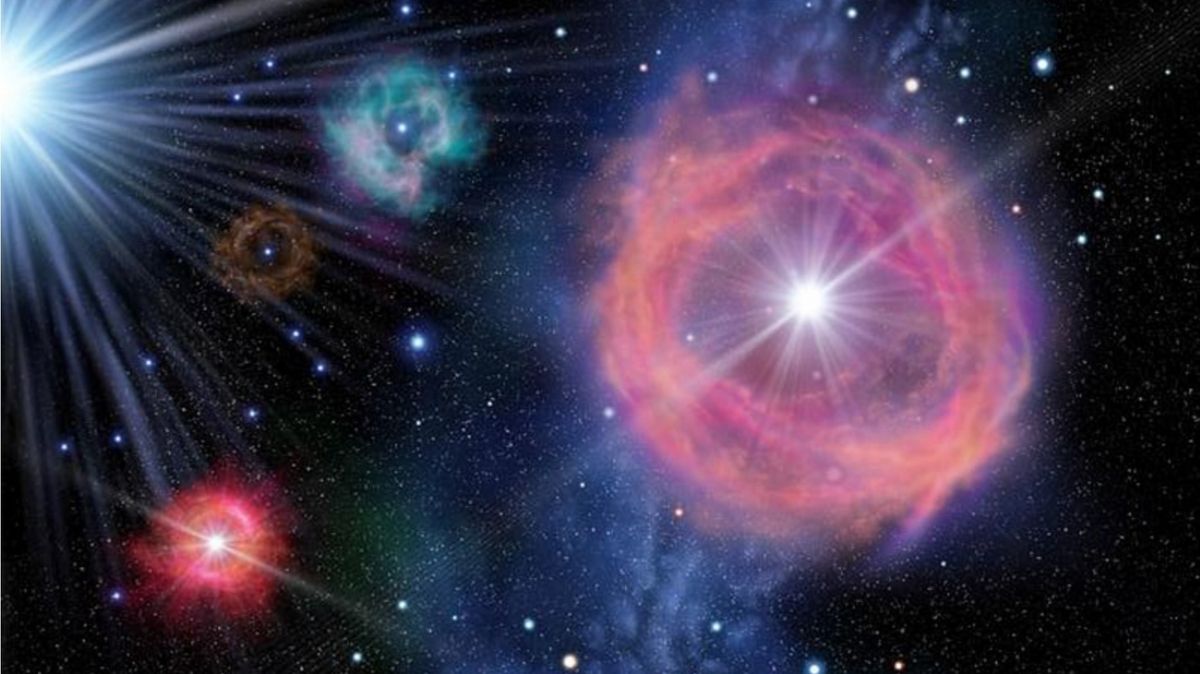Strange star holds 'holy grail' clues about unique supernova explosions in the early universe
By Robert Lea published about 17 hours ago
The star's chemical fingerprints represent evidence of pair-instability supernovae of the first massive stars, a new study suggests.

Illustration of supernova explosions in the early universe, with colorful gas halos surrounding exploded stars.
An illustration of pair-instability supernovae from very massive early stars leaving chemical fingerprints throughout the universe. (Image credit: NAOC)
The chemical composition of a strange star found in the halo of our Milky Way galaxy represents the first evidence of the violent deaths of the universe's first stars, a new study reports.
The universe’s first stars were born around 100 million to 250 million years after the Big Bang, which occurred about 13.8 billion years ago. But scientists are still in the dark about how the mass of this first generation of stars was distributed.
Modeling of stars in the early universe indicates that some of these stellar bodies may have had masses equivalent to hundreds of suns. Massive stars end their lives with gigantic cosmic explosions called supernovae, but stars with masses between 140 and 260 times that of the sun back then would have ended their lives in supernova blasts different from those typically seen in the later universe (known as Type II and Type Ia supernovae) , study team members said. These unique explosions are referred to as pair-instability supernovae (PISNe).
All supernovae spread elements heavier than hydrogen and helium, which astronomers call metals, throughout the universe. Metals are synthesized in the cores of giant stars and are incorporated into the next generation of stellar bodies.
More:
https://www.space.com/strange-star-pair-instability-supernova-early-universe?utm_source=notification
